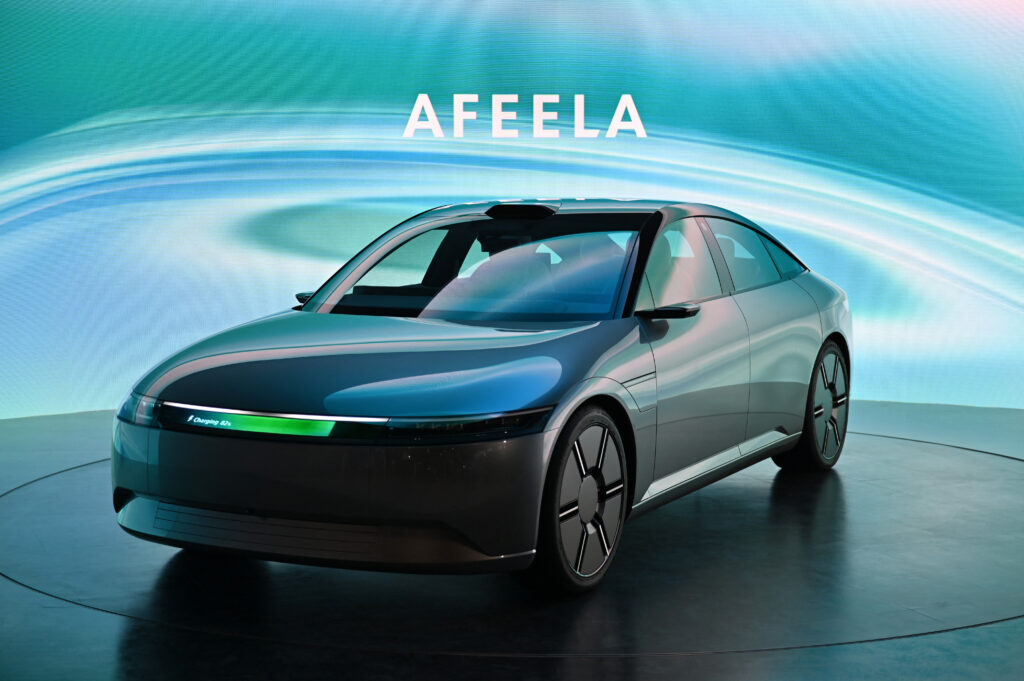
- ARAB NEWS
- 02 Jul 2025

TOKYO: “We love battery EVs.” Takero Kato, the executive in charge of electric vehicles at Toyota, said that not once, but twice, to emphasize what he considers the message at this year’s Tokyo auto show.
It’s a message ringing clear at the Tokyo Mobility Show, which will run through Nov. 5 at Tokyo Big Sight hall and where battery-powered electric vehicles are the star at practically every booth.
Mazda Motor Corp. is highlighting a sportscar concept that is a plug-in EV packed with its signature rotary engine.
Honda Motor Co. is showing off its Prelude sportscar EV concept. Toyota Motor Corp.’s lean angular Lexus concept, set to go on sale in 2026, is an electric vehicle running on lithium-ion batteries.
U.S. automakers like General Motors Co. and Ford Motor Co. aren’t exhibiting at the show and have not taken part for some years. The Americans make up a very tiny fraction of Japanese auto sales and have had a hard time cracking a market where domestic makers remain powerful.
Among the foreign makers taking part are Mercedes-Benz, a perennial Japanese favorite, and China’s BYD.
Kato denied he repeated his words because he is worried Toyota isn’t perceived as loving EVs enough.
Toyota executives have acknowledged that Japan’s top automaker has fallen behind rivals in EV development like Tesla of the U.S. and China’s BYD Auto. That is partly because of Toyota’s past success in hybrids, exemplified in the Prius, which have a gasoline engine in addition to an electric motor.
Toyota already sells a tiny two-seater called C+pod and the bZ4X, co-developed with group company Subaru, as electric offerings, but not much else. And it is eager to play catchup.
As the first serious EV from Toyota, the Lexus LF-ZC will serve as a true test for how Toyota fares in a sector that still comprises a minority of the global market but is growing quickly, given priorities like climate change.
In Japan, EVs make up less than 5% of the auto market, according to the International Energy Agency. In the U.S., where Tesla dominates, EVs account for just under 10% of auto sales, although President Joe Biden is pushing for requiring at least 54% of new vehicles sold in the U.S. to be electric by 2030. In China, a third of vehicles sold are EVs.
Tesla’s global vehicle deliveries last year grew 40% from the previous year, to 1.31 million EVs. BYD sold more than 1.85 million electric cars, including plug-ins.
Toyota, meanwhile, sold fewer than 25,000 EVs worldwide last year, although in the first eight months of this year, it sold 65,000, mostly outside Japan. Toyota is targeting sales of 1.5 million EVs a year by 2026 and 3.5 million by 2030.
“We are looking toward an electrified future that we hope to build together with our customers,” Kato said.
Catching up is a challenge but not impossible, said Joshua Cobb, senior automobiles analyst at BMI.
“Over the short term, we see Chinese EVs from brands such as BYD, SAIC-GM-Wuling and Tesla-branded EVs will continue to gain market share as there is little competition at the moment,” he said.
But, Cobb added, “One thing not to underestimate is the strong brand loyalty in Japan.” He said Japanese consumers may hold off on EV purchases until more domestic models hit the market.
Nissan, an early EV maker among the Japanese with its Leaf going on sale in 2010, is showcasing four EV concept cars.
Among them is the Hyper Tourer minivan concept that Nissan says has advanced technologies like autonomous driving. It runs on high-energy-density solid-state batteries.
Senior Vice President Alfonoso Albaisa said Nissan is focusing on virtual reality and other breakthroughs that allow vehicle designers to shorten model development time.
“At Nissan, we have been racing forward with our dramatic digital shift just as other industries, like gaming,” Albaisa said.
Manufacturers are also noting that EV technology is bringing changes for how a vehicle drives.
Batteries and a motor for an EV generally take up less space than a gas combustion engine. That means EVs can have a lower center of gravity while offering more cabin space, making it a nifty powertrain for sportscars, vans, pickups and SUVs.
In Nissan and elsewhere, a key issue for EVs is battery charge time and driving range. While all the world’s major automakers are working to shorten charge time and lengthen cruise time per charge, the U.S. startup Ample has come up with a different solution — battery swapping.
Instead of charging the battery in the car, a module containing the battery is taken out and replaced by a fully charged battery at a drive-in facility built especially for the procedure. The swap, done by robots, takes just five minutes.
The approach is already being used by Uber drivers in the San Francisco area. Ample’s battery-swapping arrives in Japan this winter through a partnership with Mitsubishi Fuso, a Daimler group truck company. The swapping is being demonstrated at Mitsubishi Fuso’s booth.
De Souza said another attraction of battery swapping is its greenness. A battery can be charged flexibly, using renewable energy at times of the day with low demand for power, he said.
“We decided what worked really well about gas is that you stop for a few minutes,” said John de Souza, Ample’s president and founder.
AP